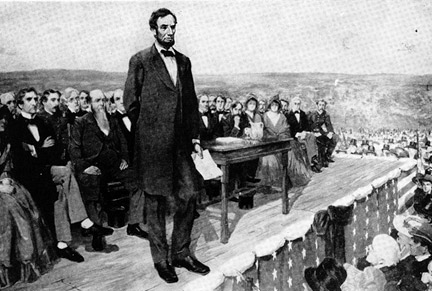Copyright 2019 by Gary L. Pullman
In I See Life Through
Rose-Colored Glasses,
mother-daughter team Lisa Scottoline and Francesca Serritella are
back, each contributing alternating essays—or, rather, “True
Stories and Confessions.”
In
doing so, the ladies employ a variety of techniques to effect humor
about everyday situations to which their readers (presumably, for the
most part, other women) can readily relate.
The
essays tend to be short, about three to four pages, or 1,100 to 1,450
words, each. Many of the paragraphs are single sentences, but even
the longer ones are typically no more than three of four.
Let's
take a look at Lisa's “Lost and Found,” which weighs in at a bit
under three pages.
Page
1
She
starts with a rhetorical question, “Did you hear the news?” This
question, of course, prompts another question in her readers' minds:
what news? It also
allows Lisa to introduce the topic of her essay, as she supplies the
answer to her own question in the next sentence-paragraph: “They
discovered a new organ.”
This
fact is, very likely, news to many, perhaps most, of Lisa's readers.
Although
her readers may be wondering when
“they” found this new organ, Lisa surprises them by stating where
it was located: “All this time, it was in your body.” (The “your”
certainly personalizes her statement.)
Perhaps,
as she writes her essay, Lisa imagines herself in a conversation with
her readers as they (or at least Lisa) sip rose a glass of rose wine.
If so, she must have imagined them declaring, “You're kidding!”
because she states, “Not even kidding.” Imagined dialogue keeps
the written dialogue natural.
Why
hadn't they found the missing organ before now? Readers might ask.
Lisa has an answer ready for them: “Maybe they were looking
outside?”
Now,
having introduced the topic, Lisa offers a few salient facts, as
background: “Anyway [almost as if she's offering an aside, rather
than context, keeping it casual], an Irish surgeon, Dr. J. Calvin
Coffey, discovered that we have something in our stomach called a
mesentery.”
Then,
she hits her readers with a play on words, always a surefire way to
get a smile, if not a belly laugh: “Before now, the mesentery was a
mystery.”
Then,
back to the surgeon: “Dr. Coffey teaches at the University of
Limerick”—readers just know a pun is coming, and Lisa doesn't
disappoint—“otherwise well known for its limericks.”
Having
introduced limericks, Lisa offers the first line of a possible such
poem, by way of example: “There once was a mesentery from Nantucket
. . .”
Then,
she defines her term. (Notice the way she breaks up the exposition as
she interleaves a bit of nonsense with her straight talk?)
“Evidently, the mesentery connects the intestine to the abdomen,
and as Dr. Coffey explained, 'It keeps the intestine in a particular
shape, so when you stand up, your intestine doesn't fall into your
pelvis.” Lisa imagines a response from the peanut gallery: “Well,
hell. That's a good thing.” She follows up the peanut gallery
comment with a comparison: “It's like Spanks for your colorectal
system.” Next, she personifies the mesentery by thanking it:
“Thanks, mesentery!”
Lisa
makes a claim and then offers a couple of absurd “reasons” to
support it (a favorite device of humorists). “Meanwhile, I might be
in love with Dr. Coffey [claim]. He has a way with words [absurd
reason one]. And also if he could find a mesentery, he could find my
car keys” [absurd reason two, which, being even more ridiculous
than reason 1, tops the previous reason].
Page
2
We
could continue to identify and analyze Lisa's techniques for
effecting humor, because we're on only page 2 of a 3-page essay, but,
instead, let's switch over to Francesca, who pens the next essay, the
four-page “Happy Birthday to Me?”
Page
1
Like
most humorists, she starts with a claim that announces her topic,
planning one's own birthday. Her next sentence (paragraph two) grants
a concession or two, and, in the process, acts as a “straight man,”
setting up the punchline to be delivered in the essay's third
sentence-paragraph: “Sure, there are years where a best friend or
significant other steps up, but in my history, some years I planned
it myself.” Then, the punchline, as Francesca admits, “Okay,
every year I've planned it myself.”
After
telling her readers that the task drives her “completely insane,”
she repeats her assertion in different words: “I'm well adjusted
eleven months out of the year, but when planning my birthday, I
become my most neurotic self.” in her next sentence-paragraph, she
intensifies her claim, declaring “It's agony.” She's creating
suspense; her readers are expecting a big payoff (laughs).
Francesca
changes gears, as she heads off in another, unexpected direction, and
her readers put their laughter on hold, trusting the laughs will
come, by and by, and that they;ll be worth the wait.
She
contrasts herself with others. “I wish I could be one of those
people who is like, 'It's mah birthday, bitches!” but I go in the
opposite direction. I'm filled with anxiety and insecurity over every
aspect of it, obsessively concerned that my guests won't have a good
time.” (Notice that Francesca peppers her dialogue with slang—and
eye dialect—keeping it real.)
Her
readers might wonder what sort of friends Francesca has; they don't
seem very supportive. To correct this notion, she blames herself for
casting aspersions on them: “It's like I forget they're my
friends.”
Francesca
wants her readers to remember that she's in turmoil, so she shares a
fantasy: “My fantasy is that someone would throw a surprise
birthday party for me, but I don't know how anyone would pull it off
in real life [why not, readers may wonder, and Francesca tells them],
because I'm such a nervous planner, I'd beat them to the punch.
They'd have to throw it for me two months in advance to save me from
the stress spiral that sucks me in each year.”
Now,
she gets down to the details of birthday party planning, as she sees
it: “It begins with the venue. I know I should just relax, choose a
bar I like, and ask everyone to show up.”
Page
2
We
could continue to identify and analyze Lisa's techniques for
effecting humor, because we're on only page 2 of a 4-page essay, but,
instead, let's list the other details she presents: invitations and
cake.
Now,
let's contrast the mom's general approach to writing humor with that
of her daughter.
LISA
Paragraphs of
only one or two sentences.
Rhetorical
questions introduce topics, set up punchlines, or transition to
new topics.
Imagined
conversation between friends, Lisa herself being one of them,
alternating with the identification of a topic or statement of a
claim, followed by information or evidence.
Much
exaggeration, but also puns, plays on words, comparisons,
definitions, a catalogue (list), and examples.
FRANCESCA
Both
one-sentence paragraphs and longer ones, consisting of as many as
seven.
Identification
of a topic or statement of a claim, followed by information or
evidence, alternating, at times, with the identification of a
problem, followed by a solution.
Division of a
topic into related subtopics, followed by information or evidence.
Items in series disguised as rhetorical questions.
Much
exaggeration, but also anecdotes, digressions, repetitions, and
admissions of self-doubt, anxiety, and obsession.
Endings
How
a humorist ends his or her humorous essay is as important as how he
or she starts it.
Lisa
catalogues the strange items she finds in her belly button: dog hair,
“little shreds of tissue paper,” and other “foreign objects.”
Her discoveries make her feel a connection with Dr. Coffey, because
“we have so much in common.”
Throughout
the bulk of her essay, Francesca has been concerned with the planning
of her birthday party. It is only natural that she would end her
essay with a description of the party itself. She has a wonderful
time, rediscovers the facts that her “friends are easygoing and
wonderful,” and finds them to be helpful and supportive. One of
them takes 'charge of the candle lighting” and gets “everybody
singing.” The result, Francesca confesses, makes “the disco dust
totally worth it.”
Sample
of Funny Lines
It
should go without saying that a humorist must be able to write funny
lines. An effective funny line sounds like an aphorism and, like
aphorisms, or proverbs, for that matter, funny lines must fit the
occasion for which they're written, succinctly summarizing a
situation or proving a claim or just stating something in a fresh and
lively manner. Here are a couple of funny lines in I See
Life Through Rose-Colored Glasses:
My couch had more toenails than my cat.—Lisa
New hobbies are a great excuse to go shopping.—Francesca






























